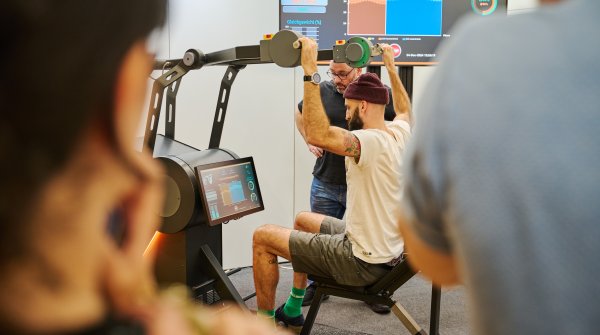"Handstand is just an exercise and besides, it's too hard, I'll never be able to do it!" If I had received a euro every time I heard that sentence, I would already be a millionaire. But one thing is certain: where there is a will, there is a way. Handstand is not just an exercise, handstand is not just for a certain target group. Anyone can learn a handstand - and much more.
When learning, you go through several phases and get to know yourself in a whole new way. I can promise you one thing: You will become calmer, more focused and practice patience. This will benefit you in everyday life as well as in handstands.
- Be patient
- Putting problems in perspective
- Being fit in mind and body
- The right expectations
- Precision
- Calmness and concentration
If you've ever tried to do a handstand, then you've probably made the experience: It takes numerous failed attempts until you've really stood on your hands - even if only for a few seconds.
The right coordination and the neural connections simply need time and above all: your patience. Because a handstand is by no means a product of chance!
If you choose exercise variations that are too difficult in the beginning, you'll soon find that it takes you much longer to get it right than if you start small. By the way, this also applies in private life: if you start with complicated tasks at work, you will quickly lose motivation and you will only end up frustrated.
So it's better to take small steps, but the right ones. Everybody started small. That's how you learn to work with your current abilities and accept your limits. You will notice: Diligence and consistency pay off!
In handstand training, I sometimes compare myself to the best workout I've ever had. Of course, this makes bad workouts seem much more dramatic. It's clear that it's difficult to put bad workouts into perspective and look at progress over time.
Through constant practice, I learned not to take setbacks so seriously, but rather to take them as an opportunity to analyze these trainings. As is so often the case, this gets you further in life than beating yourself up. In this way, you can also learn to accept detours. After all, the journey is more the goal than the end result.
The importance of the link between sports and health is no longer a secret: the megatrend of doing sports to stay fit in mind and body is booming right now.
Handstand teaches you to listen more to your body. Your head works more than you think: handstand is like brain jogging. Your muscles have to learn to work "the other way around" than what you are used to, because the fixed point comes from your hands instead of your feet. You learn where your body, feet, legs and core are in space - this can be confusing at first because your perception is skewed.
But it is this change of perspective that often reminds me in everyday life that every coin has two sides and that there is a solution to most problems.
If you go into it with the wrong expectations, you'll quickly realize that you need some time: because you won't be able to learn a perfect handstand overnight.
But you don't have to! If you set yourself intermediate goals instead of only having the big end goal in mind, you will learn to celebrate small successes. Constant training and diligence are necessary so that you can achieve the desired results - just like in everyday life.
A good handstand requires precise corrective movements. That means you have a relatively small range of motion that you have to manage. I find this particularly helpful in everyday life: when I have little room for decision, I go into myself and try to make the right decision with the help of precise, calm thoughts.
This taught me to first remain calm in critical situations and not to react with agitation. Because just as a handstand can quickly lead to a fall due to jerky movements, difficult situations can be aggravated by rough reactions.
Through handstand training you will quickly learn that you won't get far without rest. Because the training requires a lot of concentration and calmness. If you fidget, it definitely won't get you anywhere. Micro-movements in your fingers help you balance on your hands. Your head has to be there: You're focusing solely on the moment, you're in the here and now. Because if you're distracted, it doesn't work well.
I have also been able to implement this ability well in my everyday life: I work more concentrated and don't get distracted so quickly by other things. Handstand is a kind of meditation for me. You learn to consciously bring your body into a state of rest by controlling your breathing. You learn to concentrate exclusively on the things that are really relevant at the moment.
 Know-HowThe 11 Best TRX Exercises
Know-HowThe 11 Best TRX Exercises
- Awards
- Mountain sports
- Bike
- Fitness
- Health
- ISPO Munich
- Running
- Brands
- Sustainability
- Olympia
- OutDoor
- Promotion
- Sports Business
- Textrends
- Triathlon
- Water sports
- Winter sports
- eSports
- SportsTech
- OutDoor by ISPO
- Heroes
- Transformation
- Sport Fashion
- Urban Culture
- Challenges of a CEO
- Trade fairs
- Sports
- Find the Balance
- Product reviews
- Newsletter Exclusive Area
- Magazine




